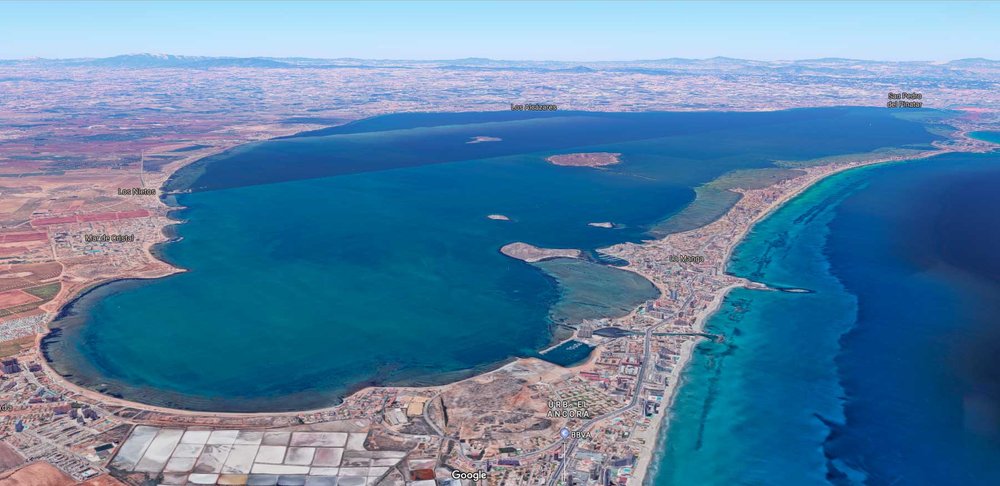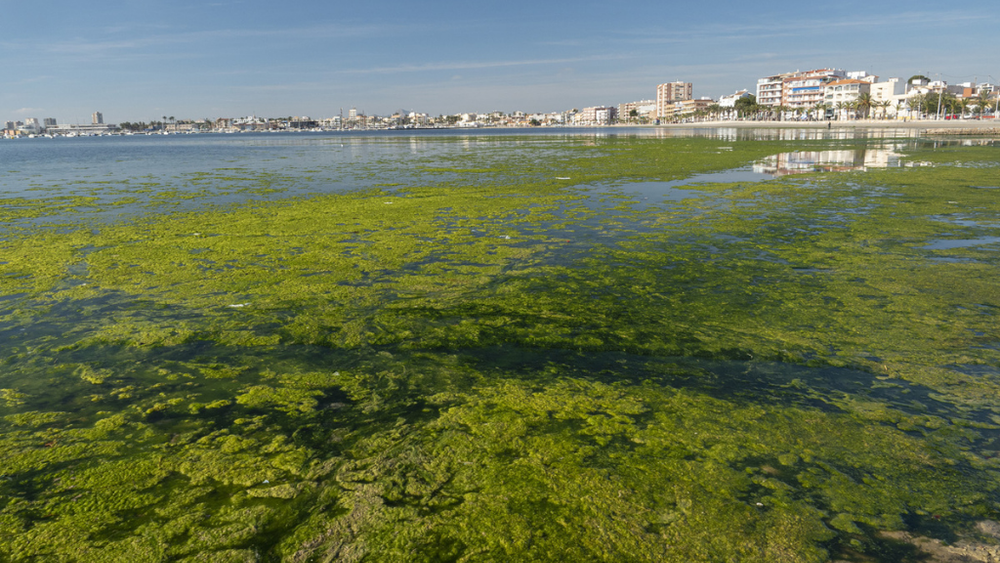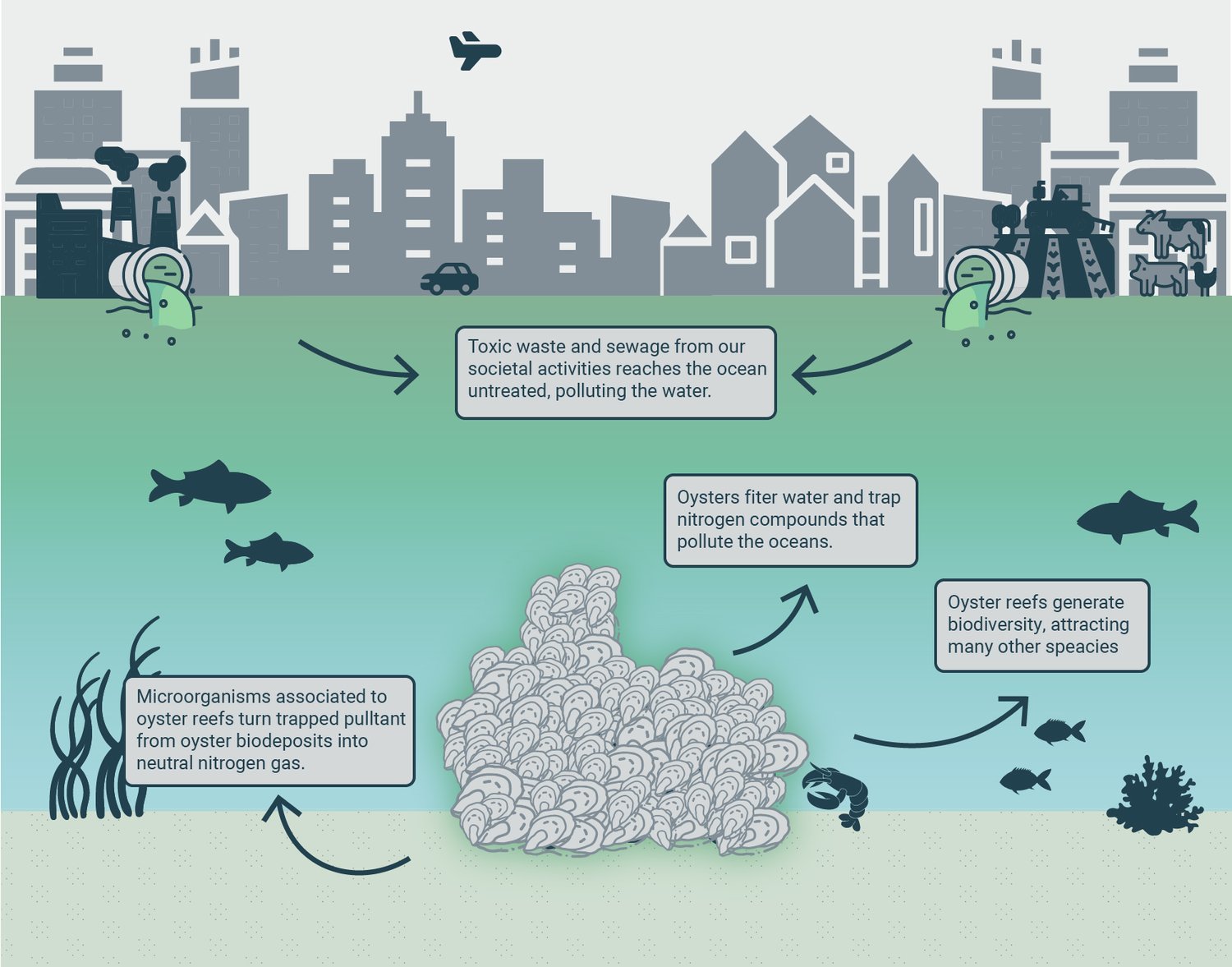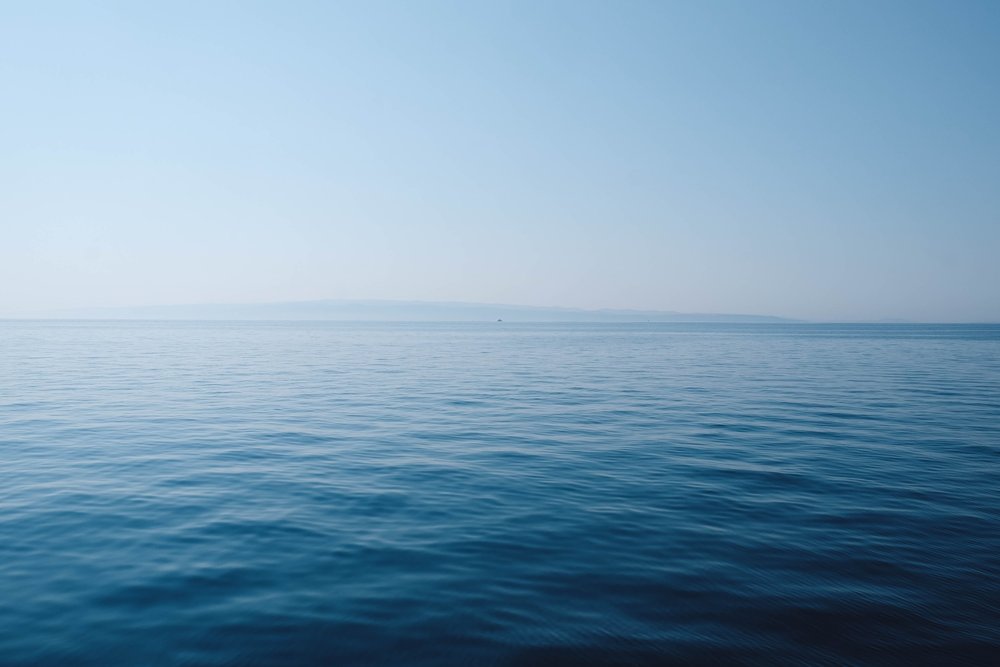
Mar Menor is one of the largest coastal lagoons in Europe, separated from the Mediterranean with a 23km long sandbar. Its conditions are unique, and so is its precious ecosystem. Or at least it was.

Let’s start with the bad news.
If you’ve heard of this region in Spain in the last few years, chances are it’s because of the terrible ecological situation. You may have seen on the news the images of dead fish on the shore, and this once beautiful lagoon turned green.
The agriculture around this lagoon used to be rain-fed but the climate was very dry. As the area developed in the 1970s, a civil engineering effort took place transferring water from the Tajo river. This allowed for much more intensive agriculture in an uncontrolled manner, using unsustainable practices. Meanwhile, tourist infrastructures also boomed, becoming a hotspot for holidayers.
The consequences of these developments have resulted in an excess of nutrients that reach the Mar Menor. 80% of these come from nutrients used in agriculture that make their way into the water, and 20% are caused by the increased tourism. How does this affect the lagoon?
These excess nutrients are now in the water and cause algae blooms, which is the excessive growth of phytoplankton. This is why the water turns green and prevents the sun from penetrating the water. As a result, vegetation on the seafloor dies and decomposes. Microorganisms will feed from it, producing toxic residue and consuming oxygen that becomes unavailable for the fish and creatures of the ecosystem causing marine dead zones.

It is urgent to reduce the nutrients in the water. The first actions should be implementing sustainable agricultural practices and controlling tourism in the region. However, there are economic conflicts of interest and political solutions often take longer than nature can wait.
Meanwhile, nature itself has a solution to remove excess nitrogen from the water. You guessed it: oysters.
Oysters and other bivalves are filter feeders that feed from phytoplankton and absorb part of the nutrients becoming part of their body, what we know as Nitrogen sequestration.
The rest of the nutrients turn into biodeposits (their faeces). And now it’s where the most interesting part comes: these biodeposits are the food source of microorganisms that, after several transformations, will turn the nitrogen from the biodeposits into neutral Nitrogen gas, releasing it into the atmosphere, completing the denitrification process and cleaning the water.

Knowing this, it seems obvious that putting oysters in Mar Menor should be a natural solution to save this dying sea and many others around the world in similar situations.
In fact, a group of scientists with the collaboration of the Biodiversity Foundation have created the RemediOS project in Spain to research how to recover the Mar Menor and its ecosystem by introducing oysters, and steps are already being taken in this direction with successful results.

Make a measurable difference for the ocean today.
You can now adopt a Mother Reef and help restore 100 oysters!

